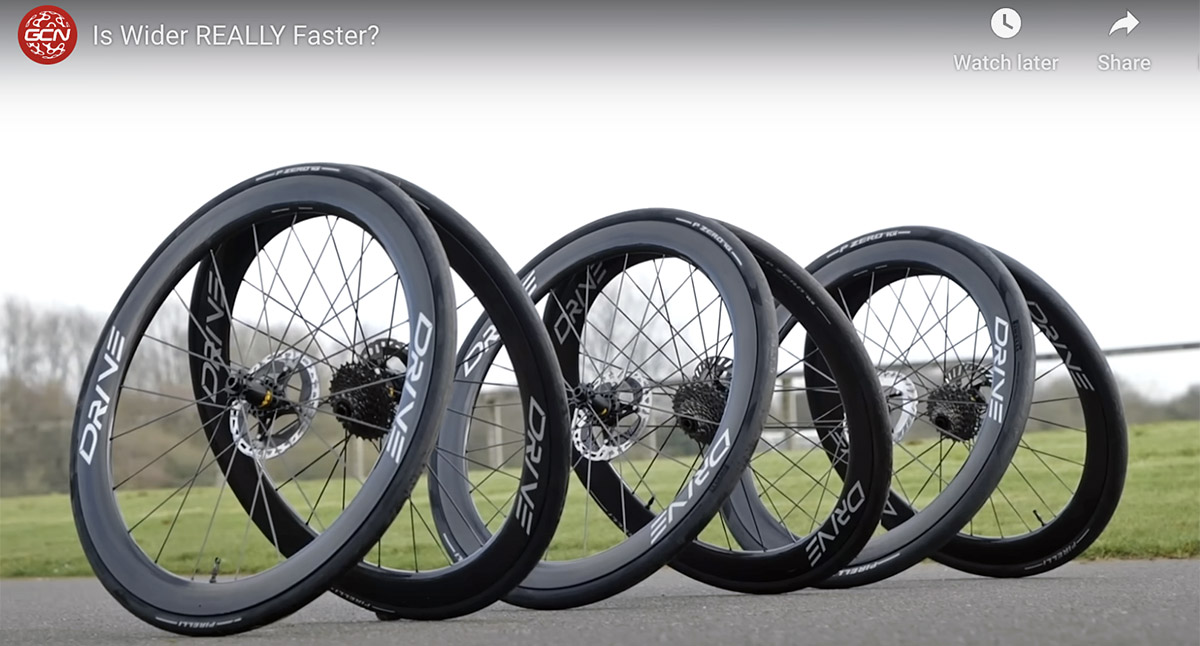Global Cycling Network: 35 mm as fast as 26
Global Cycling Network (GCN) has been following Bicycle Quarterly and Rene Herse for a long time. Recently, they covered our Nivex derailleur in their Hot Tech review. Back in 2018, they talked about a “brand-new idea”: suspension losses due to vibrations of rider and bike. And they credited Bicycle Quarterly with discovering this.
Fast-forward to 2024, and wide tires aren’t such a crazy idea any longer, but there are still plenty of riders who worry about having ‘too much tire’ for a given course. So GCN went out and tested whether “wide tires hold you back when the road surface is smooth.” They replicated a test we did back in 2016: Run the same tires in different widths on a very smooth road course at constant power outputs and compare the speeds.
Would 26 mm tires roll faster than 30 mm and 35 mm? GCN tested at 100 watts, 200 watts and 300 watts. You’d expect aerodynamics to start playing a role at the higher power outputs: At 300 watts, they rolled at 38 km/h (24 mph). For all tests, they used the same wheels, which were aerodynamically optimized for the narrow 26 mm tires.
To watch the 12-minute video, click on the ‘Play’ arrow below. Or you can just keep reading for a summary and discussion of GCN’s results.
The 26 mm tires measured 28 mm on GCN’s wide rims, and Alex and Si (Simon) remarked how 28 mm tires feel “so normal.” That’s how far we’ve come—28 mm tires are the new normal. They mention that the 35 mm tires change the handling of the bike due to pneumatic trail. This is something we’ve often mentioned when talking about geometries for all-road and gravel bikes: The extra rubber on the road makes the bike more stable—and less nimble than a road bike. (This is different from the tiny increase in geometric trail due to the large diameter of the wider tire, which has no noticeable effect.) I think this is the first time I’ve heard a mention of pneumatic trail in the mainstream press.
Si and Alex also mentioned that the bike was more susceptible to crosswinds on the 35 mm tires. They explained that with the rim being much narrower than the tire, and thus not optimized for smooth airflow. The less-smooth airflow (and greater frontal area) should also make the wide tires slower…
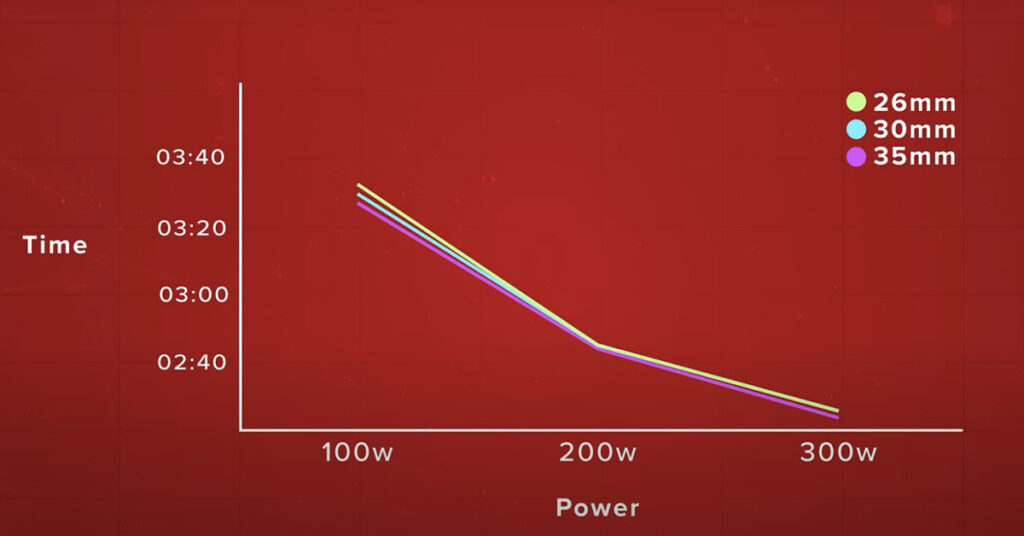
Imagine their surprise when they found that there was no speed difference between the 26, 30 and 35 mm tires. Even the (presumably) greater air resistance of the wider tires, especially when coupled with narrow rims, was not noticeable on the road. Looking at their data (above), they said: “Potentially, the 35s were fractionally faster.” But they also made it clear that this was probably within the margins of error of their testing. Their advice: “Run the widest tires that fit inside your frame.”
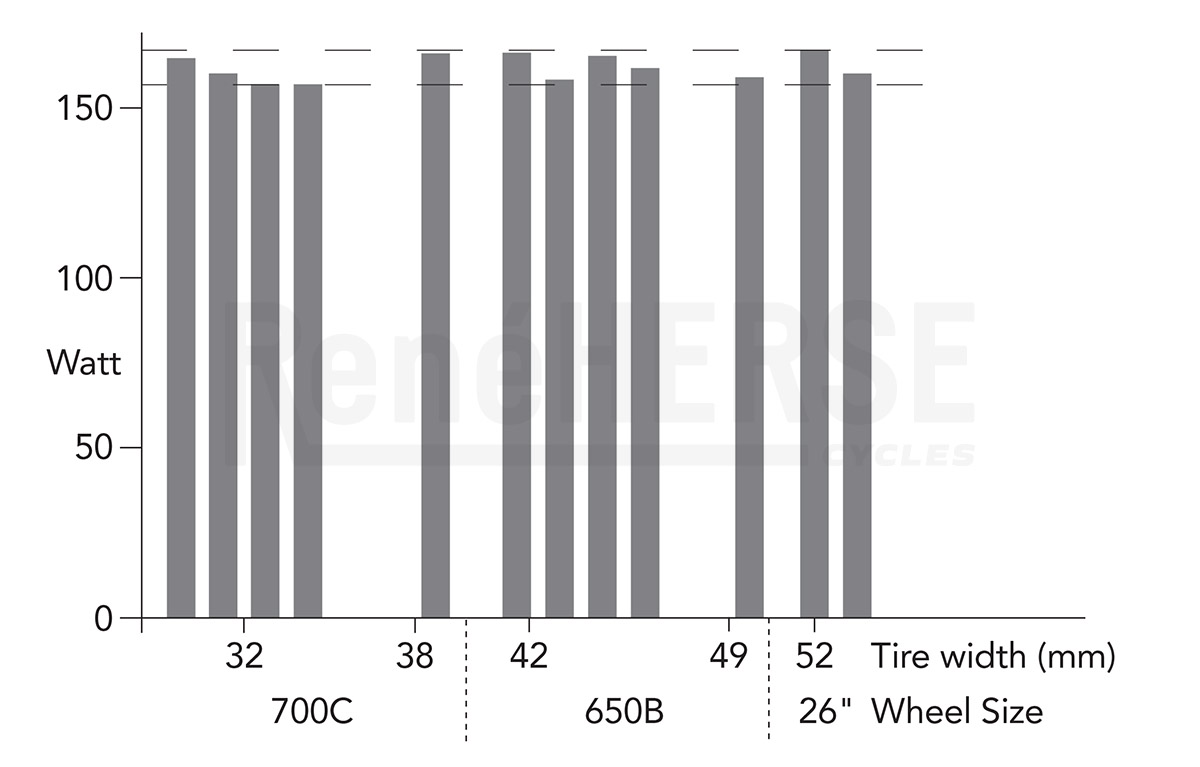
For long-time readers of this Journal (and of our magazine, Bicycle Quarterly), GCN’s results are no surprise. Above is our test from 2016, running a variety of tire and wheel sizes at a constant speed of 29.5 km/h (18.3 mph) on a smooth asphalt track, under carefully controlled conditions (no wind, constant temperature, constant rider position). As with all testing that includes a pedaling rider, there is some ‘noise’ in the data, so we can’t determine very small differences between tires.
There is no trend suggesting that wider tires are slower. In fact, like GCN, we found the 35 mm tires being faster than the 26 and 29 mm, but these small differences between tires are not statistically significant. Back then we concluded that there’s no noticeable speed difference between narrow and wide tires, even at high speeds and on smooth roads. Eight years ago, when we published this in Bicycle Quarterly 58, that was a pretty radical idea…
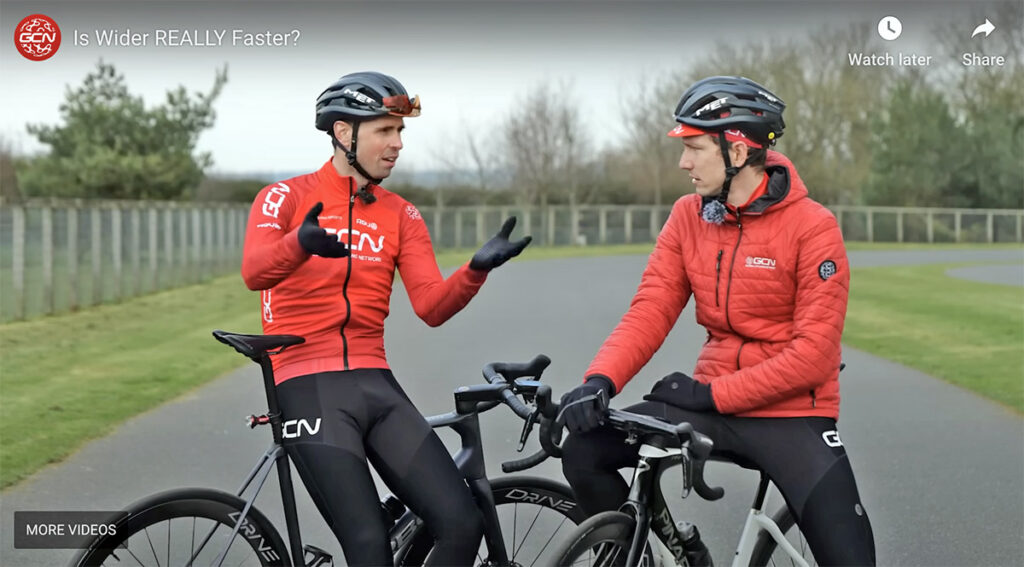
Si mentioned that this kind of testing was difficult to do in the past, because there weren’t many tires that were supple and wide. He put it this way: “Previously, wide tires were slow, puncture-resistant whatevers, whereas these 35s now are the same as the 26s. We haven’t had that option before.”
As far as the mainstream tire makers are concerned, that’s true… When you think of it, Rene Herse has a big head start in this area: We’ve been making supple, wide tires since 2014. Back then, people asked us: “What are those wide and ultra-supple tires for? You wouldn’t want tires that wide on a performance bike…” Well, we did want to ride them on our performance bikes! That’s why we made them ourselves after trying in vain to get other tire makers interested in the idea.
That’s also how we could test tires with the same casing and construction, in widths from 26 to 54 mm. And that’s how we found out that narrow tires don’t roll faster, even on smooth roads and at high speeds.
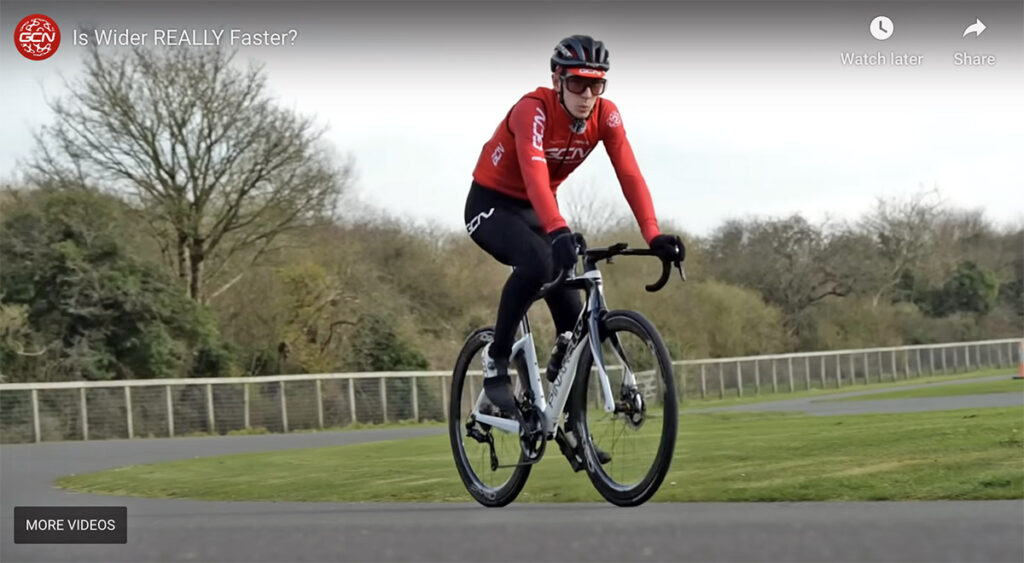
We’re glad that our research is finally getting some traction in the mainstream, because wider tires aren’t just as fast as narrow ones. They also have more grip, offer more comfort, and suffer fewer punctures. Talk about a win-win-win-win scenario!
For future tests, we’d love to send the GCN crew some Rene Herse tires that incorporate a decade of experience in making wide tires that are supple and fast. Then Alex and Si will get even more speed out of their efforts at 100, 200 and 300 watts! However, this wouldn’t change the results of their experiment—35, 30 and 26 mm tires all roll at the same speed.
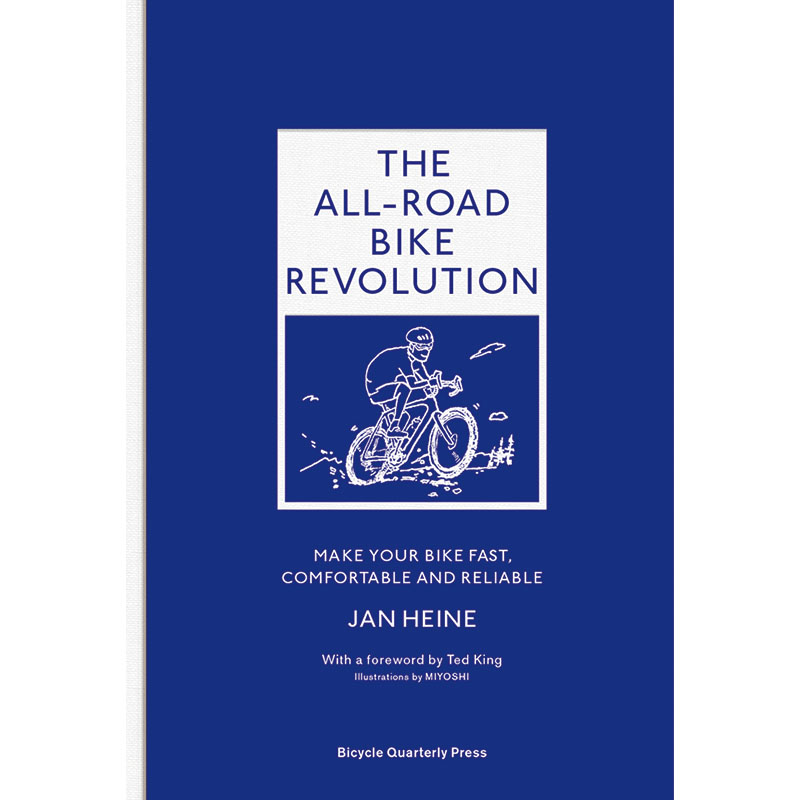
Further Reading:
- The All-Road Bike Revolution is our book that explains how modern bikes work and the science behind them: suspension losses, pneumatic trail and much more. If you’ve enjoyed this post, you’ll love the book!
- Bicycle Quarterly is our magazine where we publish cutting-edge research that continues to change our understanding how bicycles work. Plus inspiring adventures, fascinating history and thorough bike tests…


